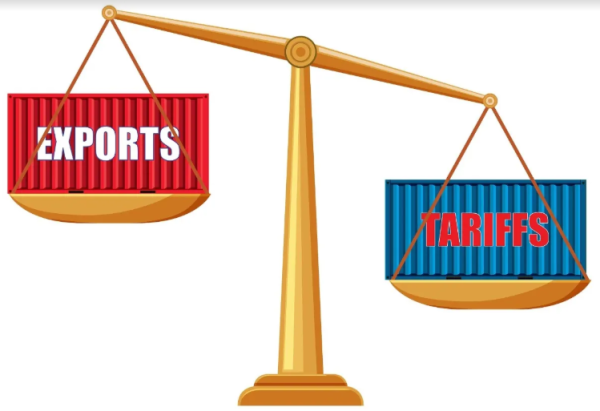India Becomes the World’s Most Populous Country, Surpassing China

A bustling crowd in a market area in Ahmedabad, India. Credit: Ajit Solanki/AP
May 24, 2023
Since at least the 1950s, when the UN’s world population data begins, China had been the world’s most populous country, overshadowing every other country in the world — except for India. But due to a decline in China’s birth rate, the era of Chinese supremacy has ended. India, with about 1.43 billion people, overtook China at the end of April of 2023, heralding both hope and difficulties in India’s future.
Fifty years ago, both nations had similar birth rates; 5.6 children per woman for India and 5.5 for China. These were both far above the replacement rate (the amount of births needed to keep a country’s population stable), which is about 2.1 children per woman. In 1952, India started a family planning programme with the aim of promoting awareness of reproductive health, preventing maternal and infant mortality, and generally stabilizing population growth. Sterilization has historically been a major and controversial component of this strategy. Due to international pressure, India adopted sterilization as a simple, though domestically unpopular, method of population control. Since the 1950s, India has given monetary incentives for sterilization; during a 21-month national emergency from 1975 to 1977, the government even suspended civil liberties and forcibly sterilized millions of people, mostly men. After the emergency ended, India returned to a less aggressive program. From 1981, the growth rate declined consistently, eventually reaching the replacement rate of 2.1 in 2020, but the population continues to grow.
China, meanwhile, used an entirely different strategy. After the establishment of the People’s Republic, the government actually encouraged families to have multiple children, which resulted in a rapidly growing population. Local governments began family planning programs at the behest of the CPC Central Committee. In the late 1970s, the Chinese leadership decided that to increase per capita income, they would have to strictly control population growth, and so the infamous one-child policy was born. The policy was mostly enforced in urban areas, where families were more likely to comply. In addition, in the early 1980s, authorities performed forced abortions and sterilizations for women. The birth rate dropped below replacement level in the 1990s.
In 2016, the Chinese government increased the limit to two children per family, but by this time, the one-child ideal was already ingrained in the nation, and families doubted that they could economically support more children. The birth rate did not appreciably increase. The aging population and shrinking workforce pushed the government to increase the limit to three children per family in 2021, along with a slew of financial incentives intended to alleviate the pessimism surrounding having multiple children. Despite these measures, the Chinese population shrunk by almost a million people in 2022, and its remaining population is rapidly aging.
India’s population, on the other hand, is quite young. This gives it an obvious advantage over every other country, but it could also turn into an economic catastrophe if it does not act quickly. To harness its young population, India must create millions of jobs for the new workers, and it is currently not on pace; according to the data research firm CMIE, the unemployment rate in India was 7.8% in March. Agricultural jobs are growing more popular due to the COVID-19 pandemic forcing urban workers to return to their rural homes, which is the opposite of the trend that started India’s explosive growth in the 1990s. The percentage of women employed, which was already abysmal before the pandemic, has dropped to 19% as of 2020.
Still, there is reason for optimism. Manufacturers like Foxconn (which manufactures Apple products) have already begun to build factories in India; at a conservative estimate, the growth of the manufacturing industry could create 85 million jobs in India by 2047. To unlock the full potential of this industry, according to Mahesh Vyas, the head of CMIE, India must increase its level of public investment, while other economists also emphasize the importance of improving the skills of Indian workers. India’s population must eventually grow old, so it has only a precious window of opportunity to build a formidable workforce. If this happens, India could create serious competition for China on the international market and become a dominant economy in the 21st century.
References:
- Beniwal, Vrishti. “Analysis | Why India’s World-Beating Growth Isn’t Creating Jobs.” The Washington Post, 30 November 2022, https://www.washingtonpost.com/business/why-indias-world-beating-growth-isnt-creating-jobs/2022/11/30/4358f47c-7089-11ed-867c-8ec695e4afcd_story.html. Accessed 24 May 2023.
- Jiang, Quanbao et al. “China’s Population Policy at the Crossroads: Social Impacts and Prospects.” Asian journal of social science vol. 41,2 (2013): 193-218. doi:10.1163/15685314-12341298
- Gupte, Prajakta R. “India: “The Emergency” and the Politics of Mass Sterilization.” Association for Asian Studies, 2017, https://www.asianstudies.org/publications/eaa/archives/india-the-emergency-and-the-politics-of-mass-sterilization/. Accessed 24 May 2023.
- Jain, Siddharth, and Ashish Yadav. “The next 25 years: India’s golden opportunity to become a manufacturing powerhouse.” The Economic Times, 27 February 2023, https://economictimes.indiatimes.com/small-biz/sme-sector/the-next-25-years-indias-golden-opportunity-to-become-a-manufacturing-powerhouse/articleshow/98263284.cms?from=mdr. Accessed 24 May 2023.
- Jha, Somesh. “World’s largest population: Will India gain or lose? | Business and Economy.” Al Jazeera, 18 April 2023, https://www.aljazeera.com/features/2023/4/18/overtaking-chinas-population-will-india-gain-or-lose. Accessed 24 May 2023.
- Muttreja, Poonam. “Why China got population control wrong; India got it right.” Al Jazeera, 4 May 2023, https://www.aljazeera.com/opinions/2023/5/4/why-china-got-population-control-wrong-india-got-it-right. Accessed 24 May 2023.
- “Population & Demography Data Explorer.” Our World in Data, https://ourworldindata.org/explorers/population-and-demography?facet=none&Metric=Population&Sex=Both+sexes&Age+group=Total&Projection+Scenario=Medium&country=CHN~IND. Accessed 24 May 2023.
- Silver, Laura, et al. “Key facts about India’s growing population as it surpasses China’s population.” Pew Research Center, 9 February 2023, https://www.pewresearch.org/short-reads/2023/02/09/key-facts-as-india-surpasses-china-as-the-worlds-most-populous-country/. Accessed 24 May 2023.
- UN. “India to overtake China as world’s most populous country in April 2023, United Nations projects | United Nations.” the United Nations, 24 April 2023, https://www.un.org/en/desa/india-overtake-china-world-most-populous-country-april-2023-united-nations-projects. Accessed 24 May 2023.
- Pletcher, Kenneth. “one-child policy”. Encyclopedia Britannica, 28 Mar. 2023, https://www.britannica.com/topic/one-child-policy. Accessed 24 May 2023.









